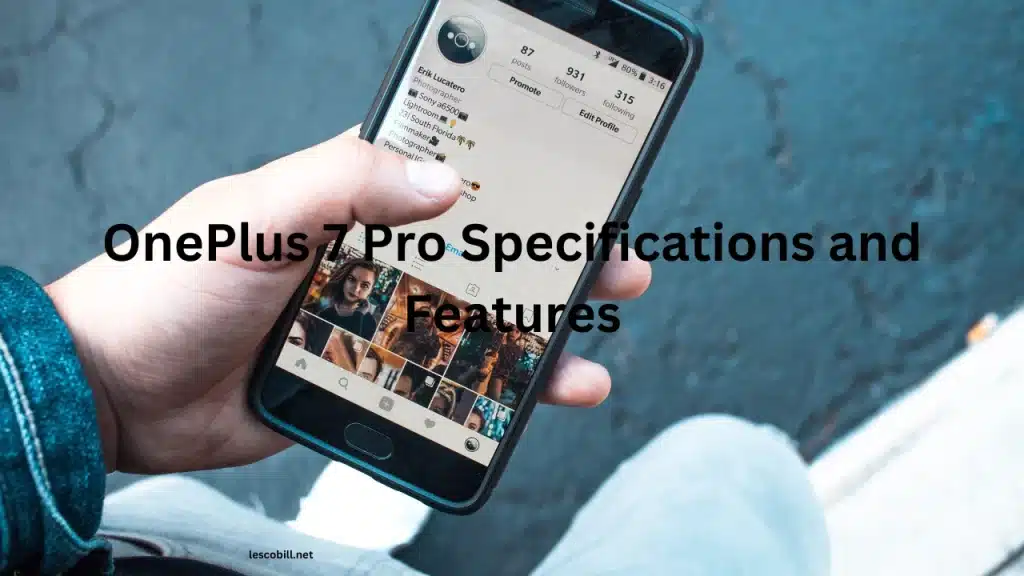The Toyota Yaris price in Pakistan makes it one of the most popular sedans in the country, known for its affordability, reliability, and fuel efficiency. Since its launch, the Toyota Yaris has gained significant popularity due to its sleek design, advanced features, and smooth driving experience.
For those planning to buy this car, knowing the Toyota Yaris price in Pakistan is essential. This guide provides the latest prices, features, specifications, and factors that influence the cost of the Toyota Yaris 2025 model.
You May Like: oneplus 7 pro price in pakistan
Toyota Yaris Price in Pakistan – 2025 Latest Update
The Toyota Yaris price in Pakistan varies depending on the variant, transmission type, and additional features. Below is the latest price list:
Toyota Yaris 2025 Price List in Pakistan
| Variant | Transmission | Engine | Price (PKR) |
|---|---|---|---|
| Toyota Yaris GLI 1.3 Manual | Manual | 1.3L | 3,200,000 |
| Toyota Yaris GLI 1.3 CVT | Automatic | 1.3L | 3,400,000 |
| Toyota Yaris ATIV 1.3 Manual | Manual | 1.3L | 3,500,000 |
| Toyota Yaris ATIV 1.3 CVT | Automatic | 1.3L | 3,700,000 |
| Toyota Yaris ATIV X 1.5 Manual | Manual | 1.5L | 3,900,000 |
| Toyota Yaris ATIV X 1.5 CVT | Automatic | 1.5L | 4,100,000 |
Toyota Yaris Variants in Pakistan

The Toyota Yaris is available in six variants, catering to different customer needs. Here’s a detailed comparison of each variant:
1. Toyota Yaris GLI 1.3 Manual & CVT
This is the base model of the Toyota Yaris with a 1.3L engine.
- Engine: 1.3L Inline-4
- Transmission: Manual (GLI 1.3 Manual) / CVT (GLI 1.3 CVT)
- Features:
- Fabric seats
- Dual front airbags
- ABS with EBD
- 15-inch steel wheels
- Basic infotainment system
2. Toyota Yaris ATIV 1.3 Manual & CVT
This model offers premium features compared to the base variant.
- Engine: 1.3L Inline-4
- Transmission: Manual (ATIV 1.3 Manual) / CVT (ATIV 1.3 CVT)
- Additional Features:
- Fog lamps
- Smart entry & push start
- Alloy wheels
- Rearview camera
3. Toyota Yaris ATIV X 1.5 Manual & CVT
This is the top-end model with a more powerful 1.5L engine.
- Engine: 1.5L Inline-4
- Transmission: Manual (ATIV X 1.5 Manual) / CVT (ATIV X 1.5 CVT)
- Premium Features:
- Leather seats
- Climate control AC
- Advanced infotainment system
- Cruise control
Toyota Yaris Features & Specifications
The Toyota Yaris 2025 comes with impressive specifications that enhance its performance, safety, and comfort.
1. Engine & Performance
The Toyota Yaris offers two engine options:
- 1.3L Engine: 98 HP & 123 Nm torque
- 1.5L Engine: 106 HP & 140 Nm torque
Both engines provide smooth performance with good fuel efficiency.
2. Fuel Efficiency
- Toyota Yaris 1.3L: 16 km/l
- Toyota Yaris 1.5L: 14 km/l
The CVT transmission enhances fuel economy by optimizing gear shifts.
3. Dimensions & Design
- Length: 4,145 mm
- Width: 1,730 mm
- Height: 1,500 mm
- Wheelbase: 2,550 mm
The aerodynamic shape of the Toyota Yaris enhances fuel efficiency and stability.
4. Safety Features
Safety is a key feature of the Toyota Yaris 2025:
- Dual airbags
- ABS (Anti-lock Braking System)
- EBD (Electronic Brake-force Distribution)
- Brake Assist (BA)
- Vehicle Stability Control (VSC)
- Traction Control System (TCS)
These features ensure maximum protection for passengers and drivers.
Toyota Yaris vs. Competitors in Pakistan
The Toyota Yaris competes with other sedans in Pakistan, including:
| Car Model | Price Range (PKR) | Engine Options |
|---|---|---|
| Toyota Yaris | 3,200,000 – 4,100,000 | 1.3L & 1.5L |
| Honda City | 3,100,000 – 3,900,000 | 1.2L & 1.5L |
| Changan Alsvin | 2,769,000 – 3,244,000 | 1.3L & 1.5L |
| Suzuki Ciaz | 3,000,000 – 3,500,000 | 1.4L |
Why Choose Toyota Yaris?
- Better resale value than competitors.
- Fuel efficiency is higher than Honda City.
- Low maintenance cost compared to imported sedans.
- Toyota reliability ensures long-term performance.
Factors Affecting Toyota Yaris Price in Pakistan
The price of Toyota Yaris in Pakistan is influenced by several factors:
- Import Duties & Taxes
- High government taxes increase car prices.
- Exchange Rate Fluctuations
- A weaker Pakistani Rupee increases the cost of imported parts.
- Local Assembly vs. Imports
- Locally assembled Toyota Yaris is cheaper than imported sedans.
- Demand & Supply
- High demand can increase dealership prices.
- Inflation & Fuel Prices
- Rising inflation and fuel prices impact car production costs.
Pros & Cons of Toyota Yaris
Pros
Affordable price compared to competitors
Fuel-efficient engine
Spacious & comfortable interior
Strong resale value
Cons
CVT transmission feels underpowered on highways
Rear-seat space is slightly cramped
Is Toyota Yaris Worth Buying in 2025?
The Toyota Yaris 2025 is an excellent choice for buyers looking for an affordable, fuel-efficient, and feature-packed sedan. With multiple variants, customers can choose the model that suits their budget and needs.
✔ If you want a reliable, fuel-efficient, and comfortable sedan, Toyota Yaris is the best option in Pakistan.
Toyota Yaris Price in Pakistan – A Budget-Friendly Sedan
The Toyota Yaris price in Pakistan makes it a budget-friendly option for sedan lovers. It offers a combination of affordability, fuel efficiency, and reliability. With multiple variants, buyers can choose a model that fits their budget and needs.
Compared to other sedans in its category, Toyota Yaris provides a cost-effective solution. The competitive pricing allows middle-class families and professionals to own a quality sedan at a reasonable price. Its fuel efficiency and low maintenance costs further add to its affordability.
Toyota Yaris Price in Pakistan – Monthly Installment Plans
Many buyers prefer installment plans due to rising car prices. Several banks and leasing companies offer Toyota Yaris financing with easy monthly installments. The down payment usually ranges from 20% to 30%, depending on the bank’s policy.
The Toyota Yaris price in Pakistan can be covered in 3 to 5-year installment plans. Monthly payments start from PKR 60,000 to PKR 120,000, depending on the variant. These flexible plans make it easier for buyers to afford the Yaris without financial burden.
Toyota Yaris Price in Pakistan – Impact of Government Taxes
The Toyota Yaris price in Pakistan is heavily influenced by government-imposed taxes and duties. The Federal Excise Duty (FED), Sales Tax, and Withholding Tax increase the final price of the vehicle.
In the past few years, car prices have risen due to higher taxation policies. Any future reduction in duties and taxes can make the Toyota Yaris more affordable for buyers. Government policies play a crucial role in determining car prices in Pakistan.
Toyota Yaris Price in Pakistan – Resale Value & Market Demand
The Toyota Yaris holds strong resale value in Pakistan due to Toyota’s trusted brand image. Many buyers prefer Toyota vehicles because they offer long-term reliability and easy maintenance.
Due to high demand, the resale value of Toyota Yaris remains stable. Unlike imported sedans, Toyota Yaris has readily available spare parts, making it easier to sell in the second-hand market. Buyers looking for a sedan with good resale value should consider the Yaris as a smart investment.
Toyota Yaris Price in Pakistan – Is It Worth Buying in 2025?
The Toyota Yaris price in Pakistan may seem high, but it offers excellent value for money. It comes with advanced safety features, fuel-efficient engines, and modern technology that make it a competitive choice.
For those looking for a reliable, comfortable, and fuel-efficient sedan, the Toyota Yaris is worth buying in 2025. With its multiple variants and competitive pricing, it remains a top choice among Pakistani consumers.
Frequently Asked Question
1. What is the latest Toyota Yaris price in Pakistan?
The Toyota Yaris price in Pakistan ranges from PKR 3,200,000 to PKR 4,100,000, depending on the variant and dealership charges.
2. How many variants of Toyota Yaris are available in Pakistan?
Toyota Yaris is available in six variants, including GLI 1.3 Manual, GLI 1.3 CVT, ATIV 1.3 Manual, ATIV 1.3 CVT, ATIV X 1.5 Manual, and ATIV X 1.5 CVT.
3. Does the Toyota Yaris price in Pakistan include registration charges?
No, the listed prices do not include registration fees, taxes, or insurance costs, which vary based on the province and dealership.
4. What is the fuel average of Toyota Yaris in Pakistan?
The Toyota Yaris 1.3L variant gives around 16 km/l, while the 1.5L variant offers approximately 14 km/l, making it a fuel-efficient sedan.
5. Is Toyota Yaris available on an installment plan in Pakistan?
Yes, various banks and leasing companies offer Toyota Yaris on easy monthly installments, with plans ranging from 3 to 5 years.
6. Does Toyota Yaris have good resale value in Pakistan?
Yes, Toyota Yaris has strong resale value due to its fuel efficiency, reliability, and availability of spare parts in Pakistan.
7. What are the key competitors of Toyota Yaris in Pakistan?
The Toyota Yaris competes with Honda City, Changan Alsvin, and Suzuki Ciaz, offering better features and resale value than most rivals.
8. Does Toyota Yaris come with a warranty in Pakistan?
Yes, Indus Motor Company provides a standard 3-year or 100,000 km warranty for Toyota Yaris in Pakistan.
9. What factors affect the Toyota Yaris price in Pakistan?
The price depends on government taxes, import duties, exchange rates, dealership margins, and supply-demand trends in the auto market.
10. Is the Toyota Yaris a good option for Pakistani roads?
Yes, Toyota Yaris is a great choice for Pakistani roads due to its fuel efficiency, ground clearance, durability, and affordable maintenance costs.
Conclusion
The Toyota Yaris price in Pakistan varies depending on the variant and dealership charges. With advanced features, fuel efficiency, and Toyota’s reliability, it remains a top choice in the Pakistani sedan market.
If you’re planning to buy a Toyota Yaris, consider your budget, preferred features, and fuel economy. The 2025 model offers excellent value for money, making it a worthy investment.
Would you buy a Toyota Yaris in 2025? Let us know in the comments!
People Also Read: scooty price in pakistan




